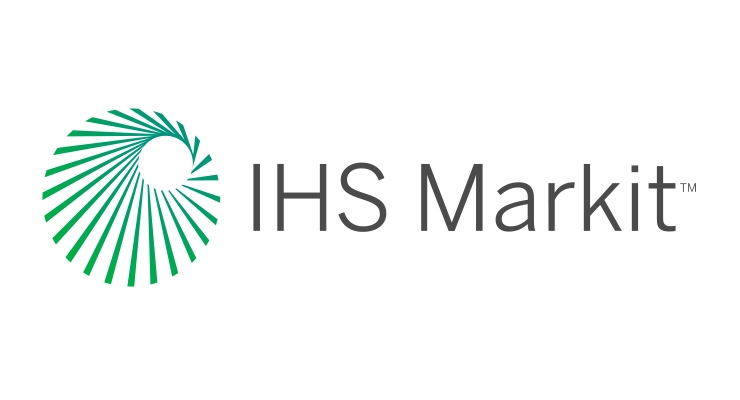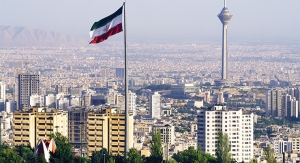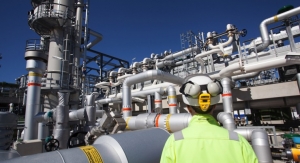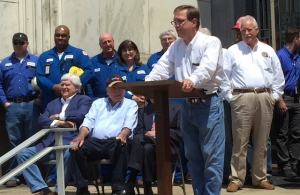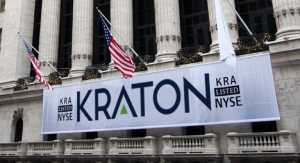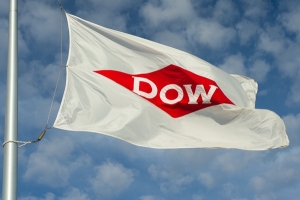09.07.17
IHS Markit is releasing periodic updates on the impact of Tropical Storm Harvey on the crude oil, refining and chemical sectors.
A summary of the latest update follows below (As of end of day September 5, 2017).
The complete report is available at here.
Logistics
The port of Corpus Christi is open with apparently no restrictions since Occidental loaded a crude tanker in the port over the weekend. This port exports crude from both the Eagle Ford and Permian shale basins.
Freeport is open too and is the terminus of the Seaway pipeline that brings crude from Cushing. However, it is unclear if draft restrictions have yet been eliminated.
Around the Houston area the story is not as clear cut. Our understanding is that Beaumont and Port Arthur were for the most part closed as of September 4. Apparently the Coast Guard is allowing some barge traffic into Port Arthur and may consider allowing ships to enter starting today.
The Coast Guard announced last Friday the Galveston Bay entrance channel, outer bar channel, inner bar channel, bolivar roads anchorages, bolivar roads channel and Galveston harbor are open. It also stated that the Texas City channel, Texas City turning basin and industrial canal are also open.
The Houston ship channel is open but with restrictions. Ships up to 40 foot draft are allowed up to around the ExxonMobil refinery at Baytown compared to a normal draft of 45 feet. And in the upper reaches of the channel only barge traffic is allowed. As ships are allowed in and experience no difficulty in navigating the Coast Guard will gradually allow larger ships into the channel.
Trucking activity in the Houston area remains disrupted by flooding, and costs for chemical and plastics shippers looking to secure truck capacity and move backlogged freight will rise.
Relief efforts are claiming truck capacity that would otherwise be dedicated to commercial and industrial shippers. Inbound rates to Houston are rising by double digits on spot market load boards. Trucking services are likely to remain disrupted for several months, not weeks. Truck rates will rise most significantly locally, but also nationwide.
Crude
As of Tuesday, the volume of Gulf of Mexico crude oil production shut-in had declined to about 121,000 b/d (equal to around 7 percent of total Gulf production).
Natural gas production shut-in has now declined to about 0.26 Bcf/d (about 8 percent of Gulf production). Some production remains offline because of ongoing takeaway constraints.
In the onshore segment, key Eagle Ford operators are reporting a quick ramp up in production, and are nearing pre-storm levels. There are still no reports of damage to crude-producing operations, and companies are returning personnel to complete inspections and resume operations. These are key signposts that production will continue to recover in the days ahead.
Key ports and pipeline system are re-opening, which will alleviate logistical bottlenecks that had threatened to further weaken inland crude prices.
Occidental Petroleum’s Corpus Christi export terminal shipped its first crude cargo since the storm over the weekend.
Corpus Christi is a critical destination for both consumption and export of Permian and Eagle Ford crude.
Magellan’s Longhorn and Bridgetex pipelines (which deliver crude from the Permian Basin to the Houston area) re-started on Friday, as did the company’s crude distribution system in Houston.
Refining
The Labor Day weekend brought nothing but good news for the U.S. refining sector.
At least two of the 20 affected refineries (Valero’s Corpus Christi and Texas City plants) were officially at “normal” run rates yesterday, with several others projected to join them in the next 48 hours.
Only five Gulf Coast refineries were neither operational nor actively starting up as of Monday September 4 – and four of these are expected to begin that process this week.
The amount of crude distillation capacity offline as of September 5 (including IHS Markit estimates of refineries operating below normal rates) is about 3.4 million b/d, or approximately 19 percent of the U.S. total. This is down from upwards of 25 percent late last week and IHS Markit expects this fraction to decline to less than 10 percent by this weekend.
Meanwhile, the Magellan and Explorer Pipeline systems (two of Houston’s three primary outbound product pipelines) both resumed operations over the weekend.
Colonial Pipeline, the third outbound system and by far the largest in the country, resumed deliveries along its distillate line yesterday and plans to restart its gasoline line today.
In the meantime, tanker shipments from Europe have also surged over the past week as the broader Atlantic Basin refining system reacts.
Questions still remain about the status of a few key Gulf Coast refineries, but the recent positive developments have certainly tempered market fears of a gasoline supply crunch.
Spot gasoline prices are declining and the growth in retail prices has slowed dramatically. To be sure, even if a few refineries do remain offline for several weeks, the U.S. and the broader Atlantic Basin refining system should have no issues meeting demand.
All this said, the potential exists for continued tightness (or even shortfall) in some markets given that Hurricane Irma is currently bearing down on Florida. That state’s gasoline supplies were effectively cut off by Harvey and are unlikely to get replenished before Hurricane Irma disrupts shipping routes. Much will depend on how Irma evolves, but Florida is certainly the most vulnerable market at this point.
Natural Gas
Demand weakness continues across the U.S., and one component, LNG exports, lingers as the most significant remaining effect of Hurricane Harvey.
LNG exports through the Sabine Pass terminal are expected to average only 0.4 Bcf/d for the first 5 days of September, according to Opis/PointLogic tracking data, while for the last 5 days of August, including the landfall and direct aftermath of Harvey, exports averaged 1.6 Bcf/d..
Sabine Pass has not had a ship off take gas since August 24, and on-site storage is becoming an issue. Hurricane Harvey has reduced ship traffic in and around the Port Arthur, Texas area.
Without the steady off take from ships in the Gulf, Sabine Pass is constrained in its ability to take in gas from the grid and liquefy it. As a result, a bottlenck is forming that has impacted gas delivered to facility from Creole Trail, Transco Pipeline and NGPL.
NGPL further confirmed a force majeure on its system, which began on August 28, due to limited access in the region due to Hurricane Harvey, and flows to the facility from the pipeline have been zero since that date.
Mexican exports are back over 4.0 Bcf/d after falling below 3.6 Bcf/d during Hurricane Harvey. Canadian net imports have been steady at 5.5 Bcf/d over the past two weeks.
As a result of the slowdown in LNG exports, the lower 48 U.S. has been a net importer of natural gas over the past 6 days, by an average of 1.0 Bcf/d.
Natural Gas Liquids (NGLs)
As of September 5, NGL operations at Mont Belvieu, Texas and the Permian Basin are returning to normal quickly.
Enterprise Products Partners said on Tuesday that it has restored service at substantially all of its major assets impacted by Hurricane Harvey.
Enterprise's marine terminals have largely returned to service, as port restrictions remain in place at certain facilities, the company said. Enterprise's two marine terminals on the Houston Ship Channel have resumed commercial service as loadings of ethane and LPG ships have resumed. In South Texas, the partnership's eight natural gas processing plants and two NGL fractionators have resumed full operations.
In addition, Enterprise's NGL pipelines in South Texas are in commercial service. With respect to pipeline operations, issues have been minimal and have not prevented movements on Enterprise's mainlines. Operationally, the partnership continues to face challenges resulting from curtailments or allocations by some critical third party service providers.
DCP Midstream said late Thursday last week that it was in the process of restarting several of its Permian Basin gas plants that had been previously curtailed due to third-party pipeline and fractionation constraints. Two plants remained shut in.
In other operations, DCP said it restarted a 200 million cubic feet per day (MMcf/d) gas plant in the Eagle Ford area Thursday, though at reduced volumes. Four additional plants with 645 MMcf/d of capacity remained shut in.
DCP’s Sand Hills, Southern Hills and other NGL pipelines into the Gulf Coast "have continued to operate and remain fully operational," DCP said.
Earlier in the week, DCP reported that five Permian-based gas plants, representing 160 MMcf/d of gas, had been taken offline and that around 845 MMcf/d of South Central Texas capacity was down as an indirect result of the storm in the Gulf.
NGL production from refineries is also quickly returning to normal as those hit in the South Texas and Houston area are returning to normal operations.
The return of supply and export terminal capacity to begin the week after the Labor Day holiday has had global implications on NGL pricing. LPG prices started the week after the Labor Day holiday weaker with the propane to crude ratio falling from 72 to 70 percent.
Additionally, the Japanese to Mont Belvieu propane differential fell from levels in the $90’s to the $80’s to begin the week as export terminals return to normal operations.
Chemical
Ethylene – The amount of confirmed outages has increased, pushing the percentage of total U.S. ethylene production offline to 54 percent and total U.S. ethylene consumption capacity to 36 percent. The Evangeline line, which connects Texas to the Louisiana, Choctaw ethylene distribution, is vital for transport of ethylene from Texas to Louisiana; thus far, the pipeline appears to be undamaged.
Propylene – The amount of confirmed propylene production assets offline remains at 41 percent of the PGP/CGP and 33 percent of the RGP supply with another 15 percent of PGP/CGP supply and 3 percent RGP supply at reduced rates. Feedstocks to crackers and PDH had been affected due to issues predominantly at Enterprise’s Mont Belvieu but are seemingly resolved as all of the fractionators at the site are now operational.
Polyethylene – While the initial impact was associated with constraints to current production capacity and on contract and spot prices, we also expect to see additional delays develop with regard to the new production capacity previously scheduled to start up during the third and fourth quarters of this year. PE producers associated with four major projects totaling about 3.6 MMT were in the final stages of startup prior to the storm.
Polypropylene – The market seems to be more upbeat to start the week on the hopes of a fast recovery by most affected resin producers. Initial reports on allocation levels to regular, prime buyers from several suppliers indicate supply levels ranging from 70 to 100 percent for the month of September.
Benzene – On Monday, it is understood that the large ExxonMobil Baytown refinery was entering into a restart. Additionally, Marathon Galveston Bay is ramping up rates after narrowly avoiding a shutdown. That should put the market at ease as each refinery accounts for nearly 10 percent of U.S. benzene capacity. The force majeure announcements sent out last week remain in place as producers determine the total impact to production. Refineries in the Beaumont and Port Arthur area continue to be impacted with production offline and the market remains tight as derivative units restart and look for available benzene. The benzene price has increased by about $0.10 - $0.15 per gallon from just prior to the storm.
Chlor Alkali/Vinyls – The market in coastal Texas continues to make progress recovering from the hurricane and subsequent flooding, but product availability is still limited. Operating rates are reported to be slowly rising at plants that remained on stream at reduced capacity during the storm. Rail operations are improved, but cannot yet be considered to be normal. With respect to vinyls, Westlake has announced a price increase on PVC of 5 cpp for October domestic contracts, following the earlier move from OxyVinyls last week.
Methanol – Little has changed for methanol at this point as work continues to restart units as well as await clearance from the ports and rail roads. Thus far we know that at least one Texas based methanol unit tripped during the flooding and is restarting while two units are understood from market sources to have been shutdown due to a lack of logistics to move methanol or its derivatives out of the area. Spot methanol market activity has resumed for September with prices elevated by around $26 per metric ton (an 8.6 percent increase) over where they were prior to the storm.
A summary of the latest update follows below (As of end of day September 5, 2017).
The complete report is available at here.
Logistics
The port of Corpus Christi is open with apparently no restrictions since Occidental loaded a crude tanker in the port over the weekend. This port exports crude from both the Eagle Ford and Permian shale basins.
Freeport is open too and is the terminus of the Seaway pipeline that brings crude from Cushing. However, it is unclear if draft restrictions have yet been eliminated.
Around the Houston area the story is not as clear cut. Our understanding is that Beaumont and Port Arthur were for the most part closed as of September 4. Apparently the Coast Guard is allowing some barge traffic into Port Arthur and may consider allowing ships to enter starting today.
The Coast Guard announced last Friday the Galveston Bay entrance channel, outer bar channel, inner bar channel, bolivar roads anchorages, bolivar roads channel and Galveston harbor are open. It also stated that the Texas City channel, Texas City turning basin and industrial canal are also open.
The Houston ship channel is open but with restrictions. Ships up to 40 foot draft are allowed up to around the ExxonMobil refinery at Baytown compared to a normal draft of 45 feet. And in the upper reaches of the channel only barge traffic is allowed. As ships are allowed in and experience no difficulty in navigating the Coast Guard will gradually allow larger ships into the channel.
Trucking activity in the Houston area remains disrupted by flooding, and costs for chemical and plastics shippers looking to secure truck capacity and move backlogged freight will rise.
Relief efforts are claiming truck capacity that would otherwise be dedicated to commercial and industrial shippers. Inbound rates to Houston are rising by double digits on spot market load boards. Trucking services are likely to remain disrupted for several months, not weeks. Truck rates will rise most significantly locally, but also nationwide.
Crude
As of Tuesday, the volume of Gulf of Mexico crude oil production shut-in had declined to about 121,000 b/d (equal to around 7 percent of total Gulf production).
Natural gas production shut-in has now declined to about 0.26 Bcf/d (about 8 percent of Gulf production). Some production remains offline because of ongoing takeaway constraints.
In the onshore segment, key Eagle Ford operators are reporting a quick ramp up in production, and are nearing pre-storm levels. There are still no reports of damage to crude-producing operations, and companies are returning personnel to complete inspections and resume operations. These are key signposts that production will continue to recover in the days ahead.
Key ports and pipeline system are re-opening, which will alleviate logistical bottlenecks that had threatened to further weaken inland crude prices.
Occidental Petroleum’s Corpus Christi export terminal shipped its first crude cargo since the storm over the weekend.
Corpus Christi is a critical destination for both consumption and export of Permian and Eagle Ford crude.
Magellan’s Longhorn and Bridgetex pipelines (which deliver crude from the Permian Basin to the Houston area) re-started on Friday, as did the company’s crude distribution system in Houston.
Refining
The Labor Day weekend brought nothing but good news for the U.S. refining sector.
At least two of the 20 affected refineries (Valero’s Corpus Christi and Texas City plants) were officially at “normal” run rates yesterday, with several others projected to join them in the next 48 hours.
Only five Gulf Coast refineries were neither operational nor actively starting up as of Monday September 4 – and four of these are expected to begin that process this week.
The amount of crude distillation capacity offline as of September 5 (including IHS Markit estimates of refineries operating below normal rates) is about 3.4 million b/d, or approximately 19 percent of the U.S. total. This is down from upwards of 25 percent late last week and IHS Markit expects this fraction to decline to less than 10 percent by this weekend.
Meanwhile, the Magellan and Explorer Pipeline systems (two of Houston’s three primary outbound product pipelines) both resumed operations over the weekend.
Colonial Pipeline, the third outbound system and by far the largest in the country, resumed deliveries along its distillate line yesterday and plans to restart its gasoline line today.
In the meantime, tanker shipments from Europe have also surged over the past week as the broader Atlantic Basin refining system reacts.
Questions still remain about the status of a few key Gulf Coast refineries, but the recent positive developments have certainly tempered market fears of a gasoline supply crunch.
Spot gasoline prices are declining and the growth in retail prices has slowed dramatically. To be sure, even if a few refineries do remain offline for several weeks, the U.S. and the broader Atlantic Basin refining system should have no issues meeting demand.
All this said, the potential exists for continued tightness (or even shortfall) in some markets given that Hurricane Irma is currently bearing down on Florida. That state’s gasoline supplies were effectively cut off by Harvey and are unlikely to get replenished before Hurricane Irma disrupts shipping routes. Much will depend on how Irma evolves, but Florida is certainly the most vulnerable market at this point.
Natural Gas
Demand weakness continues across the U.S., and one component, LNG exports, lingers as the most significant remaining effect of Hurricane Harvey.
LNG exports through the Sabine Pass terminal are expected to average only 0.4 Bcf/d for the first 5 days of September, according to Opis/PointLogic tracking data, while for the last 5 days of August, including the landfall and direct aftermath of Harvey, exports averaged 1.6 Bcf/d..
Sabine Pass has not had a ship off take gas since August 24, and on-site storage is becoming an issue. Hurricane Harvey has reduced ship traffic in and around the Port Arthur, Texas area.
Without the steady off take from ships in the Gulf, Sabine Pass is constrained in its ability to take in gas from the grid and liquefy it. As a result, a bottlenck is forming that has impacted gas delivered to facility from Creole Trail, Transco Pipeline and NGPL.
NGPL further confirmed a force majeure on its system, which began on August 28, due to limited access in the region due to Hurricane Harvey, and flows to the facility from the pipeline have been zero since that date.
Mexican exports are back over 4.0 Bcf/d after falling below 3.6 Bcf/d during Hurricane Harvey. Canadian net imports have been steady at 5.5 Bcf/d over the past two weeks.
As a result of the slowdown in LNG exports, the lower 48 U.S. has been a net importer of natural gas over the past 6 days, by an average of 1.0 Bcf/d.
Natural Gas Liquids (NGLs)
As of September 5, NGL operations at Mont Belvieu, Texas and the Permian Basin are returning to normal quickly.
Enterprise Products Partners said on Tuesday that it has restored service at substantially all of its major assets impacted by Hurricane Harvey.
Enterprise's marine terminals have largely returned to service, as port restrictions remain in place at certain facilities, the company said. Enterprise's two marine terminals on the Houston Ship Channel have resumed commercial service as loadings of ethane and LPG ships have resumed. In South Texas, the partnership's eight natural gas processing plants and two NGL fractionators have resumed full operations.
In addition, Enterprise's NGL pipelines in South Texas are in commercial service. With respect to pipeline operations, issues have been minimal and have not prevented movements on Enterprise's mainlines. Operationally, the partnership continues to face challenges resulting from curtailments or allocations by some critical third party service providers.
DCP Midstream said late Thursday last week that it was in the process of restarting several of its Permian Basin gas plants that had been previously curtailed due to third-party pipeline and fractionation constraints. Two plants remained shut in.
In other operations, DCP said it restarted a 200 million cubic feet per day (MMcf/d) gas plant in the Eagle Ford area Thursday, though at reduced volumes. Four additional plants with 645 MMcf/d of capacity remained shut in.
DCP’s Sand Hills, Southern Hills and other NGL pipelines into the Gulf Coast "have continued to operate and remain fully operational," DCP said.
Earlier in the week, DCP reported that five Permian-based gas plants, representing 160 MMcf/d of gas, had been taken offline and that around 845 MMcf/d of South Central Texas capacity was down as an indirect result of the storm in the Gulf.
NGL production from refineries is also quickly returning to normal as those hit in the South Texas and Houston area are returning to normal operations.
The return of supply and export terminal capacity to begin the week after the Labor Day holiday has had global implications on NGL pricing. LPG prices started the week after the Labor Day holiday weaker with the propane to crude ratio falling from 72 to 70 percent.
Additionally, the Japanese to Mont Belvieu propane differential fell from levels in the $90’s to the $80’s to begin the week as export terminals return to normal operations.
Chemical
Ethylene – The amount of confirmed outages has increased, pushing the percentage of total U.S. ethylene production offline to 54 percent and total U.S. ethylene consumption capacity to 36 percent. The Evangeline line, which connects Texas to the Louisiana, Choctaw ethylene distribution, is vital for transport of ethylene from Texas to Louisiana; thus far, the pipeline appears to be undamaged.
Propylene – The amount of confirmed propylene production assets offline remains at 41 percent of the PGP/CGP and 33 percent of the RGP supply with another 15 percent of PGP/CGP supply and 3 percent RGP supply at reduced rates. Feedstocks to crackers and PDH had been affected due to issues predominantly at Enterprise’s Mont Belvieu but are seemingly resolved as all of the fractionators at the site are now operational.
Polyethylene – While the initial impact was associated with constraints to current production capacity and on contract and spot prices, we also expect to see additional delays develop with regard to the new production capacity previously scheduled to start up during the third and fourth quarters of this year. PE producers associated with four major projects totaling about 3.6 MMT were in the final stages of startup prior to the storm.
Polypropylene – The market seems to be more upbeat to start the week on the hopes of a fast recovery by most affected resin producers. Initial reports on allocation levels to regular, prime buyers from several suppliers indicate supply levels ranging from 70 to 100 percent for the month of September.
Benzene – On Monday, it is understood that the large ExxonMobil Baytown refinery was entering into a restart. Additionally, Marathon Galveston Bay is ramping up rates after narrowly avoiding a shutdown. That should put the market at ease as each refinery accounts for nearly 10 percent of U.S. benzene capacity. The force majeure announcements sent out last week remain in place as producers determine the total impact to production. Refineries in the Beaumont and Port Arthur area continue to be impacted with production offline and the market remains tight as derivative units restart and look for available benzene. The benzene price has increased by about $0.10 - $0.15 per gallon from just prior to the storm.
Chlor Alkali/Vinyls – The market in coastal Texas continues to make progress recovering from the hurricane and subsequent flooding, but product availability is still limited. Operating rates are reported to be slowly rising at plants that remained on stream at reduced capacity during the storm. Rail operations are improved, but cannot yet be considered to be normal. With respect to vinyls, Westlake has announced a price increase on PVC of 5 cpp for October domestic contracts, following the earlier move from OxyVinyls last week.
Methanol – Little has changed for methanol at this point as work continues to restart units as well as await clearance from the ports and rail roads. Thus far we know that at least one Texas based methanol unit tripped during the flooding and is restarting while two units are understood from market sources to have been shutdown due to a lack of logistics to move methanol or its derivatives out of the area. Spot methanol market activity has resumed for September with prices elevated by around $26 per metric ton (an 8.6 percent increase) over where they were prior to the storm.

